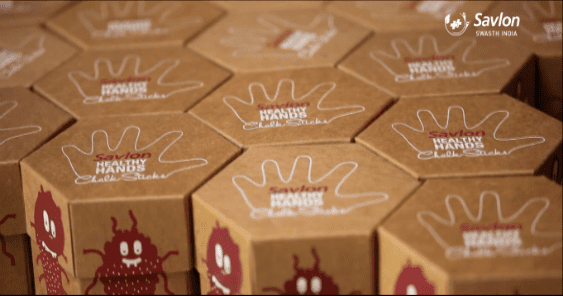How does creativity drive business? Great question – with ever-changing answers. Here’s the verdict after this year’s Cannes Lions…
“Marketing effectiveness is a critical category for any award show. If you can’t prove that creativity drives results, there’s no point in having the other categories.” Fernando Machado, Effectiveness Jury President and Global Chief Marketing Officer, Burger King
Every year WARC, the global authority on advertising and media effectiveness, analyses the Cannes Creative Effectiveness Lions, and in 2018 there were 161 entries. Their comprehensive reports assesses trends and principles that the most successful campaigns have in common.
Below is a summary of their findings and a short film with some of the jurors. It’s good news for PR practitioners in that they note that “purpose with PR does achieve results” and that this year there “was a greater emphasis on highly creative, original ideas with PR baked in upfront.”
“Many winning campaigns,including Tencent and Amnesty International, had sustainability or responsibility as their creative strategy and earned media after their campaign periods had ended. Highly creative, memorable ideas captured column inches.” WARC Creative Effectiveness Report 2018
I also found these stats from the report interesting for PR campaigns:
“Market penetration / customer gain was the second-most popular hard metric among the shortlist after sales. Winning campaigns such as Savlon, Cheetos and John Lewis cited this as a key metric.
PR value and social media remain the most important soft metrics for shortlisted campaigns. In many instances, campaigns that cited these as soft metrics were linking them back to hard metrics around sales and customer gain, such as adidas Originals, Cheetos Museum and Pedigree’s Child Replacement Programme. In this way, the campaigns were using PR and social as a valuable tool in the path-to-purchase.”
There were 3 other key themes:
- Product-led approaches to solving problems were rewarded
A campaign that we love and highlighted last year is Saltwater Brewery’s Edible Six Pack Rings which saw the small brewery show an alternative to plastic packaging rings that can endanger wildlife.
The Grand Prix winner, Savlon, found a practical solution that encourages schoolchildren to wash their hands with soap to help prevent disease – and created a new product idea that shifted the category.
See some of the judges comments here.
“Savlon drove incredible results for the client and it also solved a problem and put the brand and the business at the centre of that solution. We were proud to award it with the Grand Prix.” Kristina Duncan, VP Global Marketing Communications, Barbie Mattel
2. The use of emotion and humour to engage consumers
This finding is of course no headline – the IPA’s Long and Short of It report, and many others demonstrate the power of emotion over logic when it comes to communicating messages (see Brexit for reference 😉 )
This year’s winners were no exception. Winning cases that led with emotion were John Lewis (Buster The Boxer), Pedigree and Snickers – all using emotional storytelling with lighthearted humour. The report found that video – in any format – is key to delivering emotional or humorous messages.
Graham Page, Managing Director, Offer and Innovation, Kantar Millward Brown, having deep-dived into the four themes, says: “This year’s Creative Effectiveness Lions Winners are powerful illustrations that advertising with heart is more powerful than rational argument.”
In the report, neuroscientist Dr Cristina de Balanzo points out that humour can be “a reliable way of offering more rewarding brand experiences. Humour is an emotional weapon but it needs to be used carefully.” She goes on to add that “humour is emotionally rewarding.” The Cheetos campaign is cited as a good example of where humour is used to great effect for the brand turning food into art but staying loyal to the product.
3. Online conversion comes to the fore
The impact of integrated and customised e-commerce on particular categories was evident among this year’s winners. Cheetos, adidas and The New York Times drove people online and increased traffic following creative campaigns with a clear mission. That traffic, in turn, led to online conversions. Web traffic as a metric for shortlisted papers more than doubled since 2017, from 7% to 15%.
My key takeaways for your own creative work from the report:
From Saltwater Brewery – if you’re a challenger brand or have a small budget, you can still be pioneers of global change and thought-leaders for an entire category. Be brave enough to take on your category’s biggest challenges.
From Cheetos – put the product at the heart of your idea, allow participation, observe your customers and build on existing behaviours rather than trying to create new ‘trends’.
From Savlon – awareness is not everything: instead of communicating a problem, create a product or initiative that can solve it. Make it scaleable and test it first. Find relevant partnerships. Make it affordable.
From SickKids Foundation: SickKids VS …
The best way to stand out in a crowded category is to stop acting and looking like the competition and find afresh narrative. In this case SickKids were inspired by brands that glorify high performance, such as sportswear brands Nike and Under Armour, which would particularly appeal to the male donor they were targeting. From a storytelling point of view – identify an ‘enemy’.
You can download a sample of the report here.
- At Now Go Create we obsess about creativity – what it is, how it works and how we can all be better at it! If you’re interested in doing the same, find out more about our creativity training courses.

